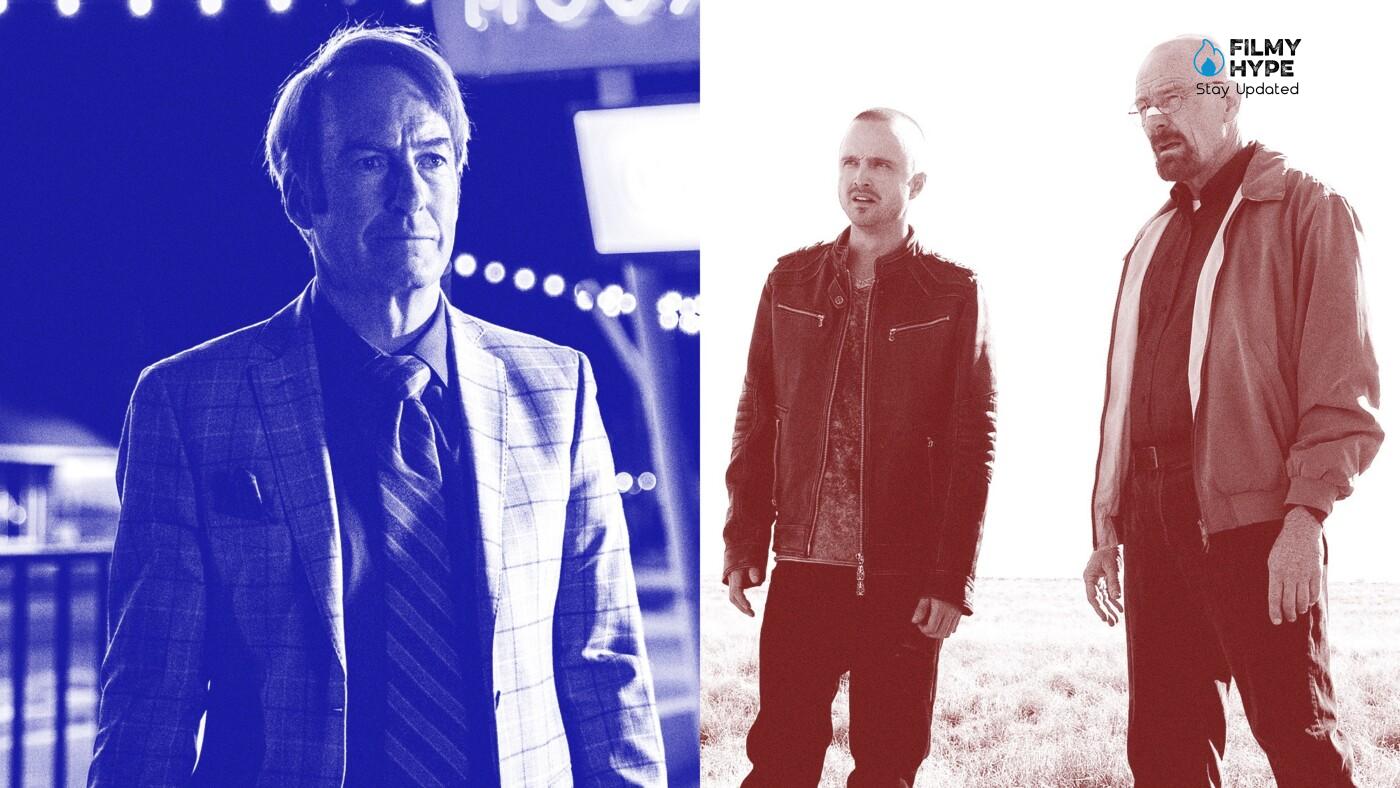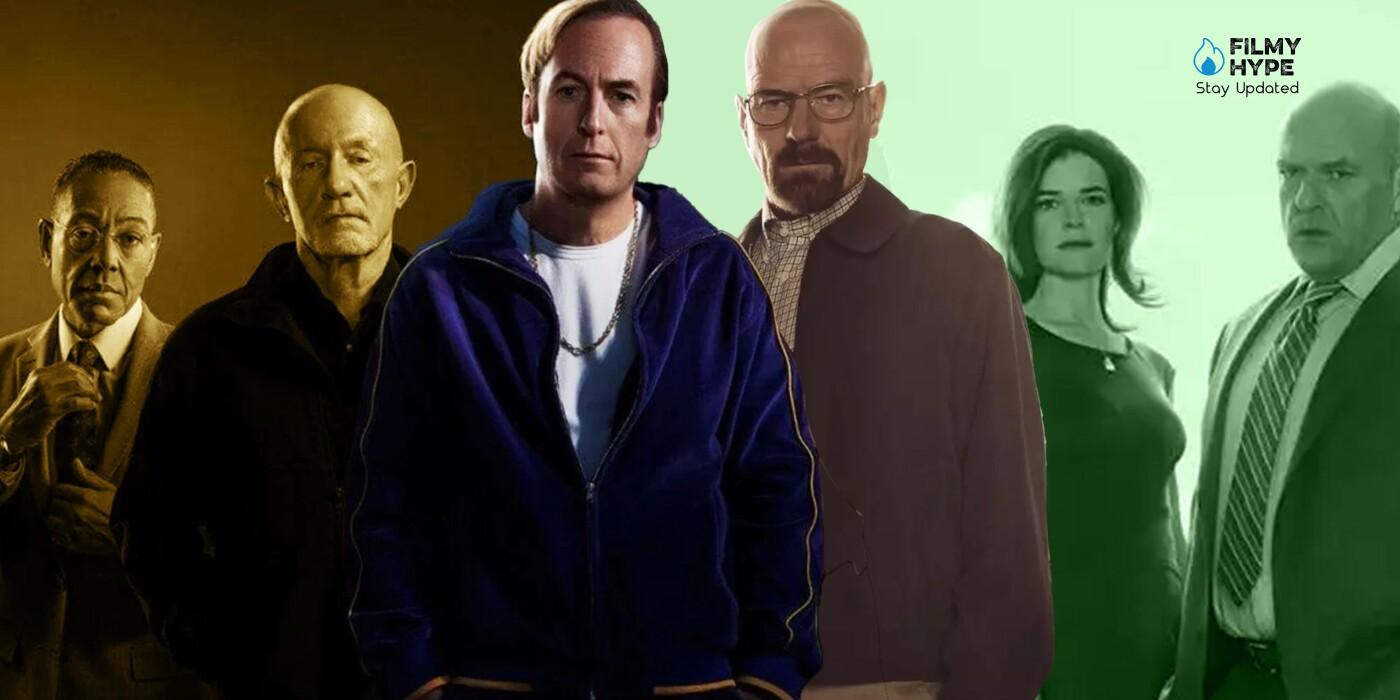Has Better Call Saul Overcome Breaking Bad? Masterpieces In Comparison After Admiring The Splendid Ending Of The Spin-Off
After 63 episodes and 6 seasons, Better Call Saul has also reached its conclusion. As mentioned in our review of the Better Call Saul ending, the rise of the spin-off based on Vince Gilligan’s masterpiece surprised everyone with its production quality and authorial footprint, reaching and in some cases surpassing – the mother work. Although it would be impossible to consider a real head-to-head between two essentially different works, even if deeply linked, one of the questions that most happen to ask concerns precisely the possible overcoming of Better Call Saul compared to Breaking Bad.

Has Better Call Saul Overcome Breaking Bad? Masterpieces In Comparison
The analysis of the two paths, compared as parallel paths, allows us to observe interesting details of the creative process of Gilligan and Gould, able to raise the bar where necessary to complete a path that has lasted almost 14 years. The success of Breaking Bad had such a disruptive impact on the television world that it profoundly disrupted the market and the way of conceiving the medium. Given the essential importance of what many consider to be the best television work ever, Better Call Saul had to deal with a large ghost behind him. General skepticism, thanks to the much more reasoned and complex start than Breaking Bad, marked the reactions of many viewers in the early years of BBCS’s broadcast. However, the work done by Gilligan managed to reach unexpected heights with creativity and mastery. Let’s analyze together the strengths of both works and the elements that allowed them to ascend to the Olympus of TV.
The Importance Of The Context
Breaking Bad chronicled the epic criminal rise (and descent into darkness) of a chemistry professor turned drug leader. If in the epic lived by Walter White, we observed a protagonist who progressively abandoned his humanity in the name of power, in the journey of Jimmy McGill instead a constant transition takes place in a path of growth and awareness aimed at assuming in all respects a predetermined role. From a certain point of view, therefore, both Albuquerque tales show the passage from one extreme to the other through crime.
On the surface, both series concentrate their intertwining on the underworld, exalted using reaching greater magnitude if you accept particularly high risks. While the protagonist’s fight to preserve or to fully develop their identity, the conflict between the ordinary and the criminal emerges predominantly. Breaking Bad has found one of its main strengths precisely in recounting the evolution of a personality deteriorated and distorted by the underworld: from this point of view, Walter White’s rise to power undoubtedly has a greater grip and impact than the conflict. interior of a criminal who struggles to stay on the right path.
Likewise, when it comes to action and intensity, Breaking Bad wins hands down – at least quantitatively speaking. But that’s right, because Better Call Saul has a more internal and less explosive approach than the original work, despite several peaks in this aspect too. In terms of raw action, the last few seasons of the spin-off have shown a surprising rise which, however, distances itself in dynamics and majesty compared to Breaking Bad, leaving room for darker and more horrifying atmospheres.
Thanks to the characters and their actions, the two series emblematically show the two faces of violence: one that is spectacular, surprising and exciting for the viewer; the other dark and unpredictable, the epicenter of a vortex of narrative tension. The characters shown in the two series also highlight the growth of the authors in the way they insert their characters within similar contexts. There is no need to point out the importance of Walter White, one of the best characters in television history, but Better Call Saul has shocked the entire panorama by masterfully deepening already known characters, such as Mike or Gus, and bringing them to the screen Lalo, one of the most iconic faces. of the recent history of the medium.
Between Flashes of Genius and Maturity
Among the main complaints that fuel the clash and highlight the substantial difference between the two works, Better Call Saul has always started at a disadvantage in the eyes of the occasional spectator, less accustomed to certain narrative dynamics. For some, the introspection and continuous analysis of the first seasons of the series represented the main reason for abandoning the vision in favor of the mother series. Moreover, there is no doubt that Gilligan and Gould intentionally deepened certain aspects of the narrative at the expense of particular intensity in the action and the immediate rendering of events.
In doing so, regardless of what the regretted fans may complain about, the spin-off has been able to offer an incredibly detailed look at contexts, situations and characters that not even Breaking Bad had been able to develop with such freedom. The presence of Jimmy’s brother as the glue and integral part of this first trend characterized by constantly changing ties and contrasts demonstrates how much the narrative construction desired by the showrunners aimed toward inner chaos. With the maturity reached by Gilligan, now more than ever aware of his means and strengths, the analysis of the characters presented on the screen also grows, reaching incredible levels in terms of characterization and writing.

Observing Jimmy’s slow and reasoned progression allows you to follow him in a compelling story, with the viewer accompanied along the path and constantly invited to keep the attention high, connecting the dots to fully understand the actions and motivations. This, unlike the treatment reserved for Walt, much more disruptive and charismatic in the purest sense of the term, allows for a much more complete and fully assimilable backstory for the observer. Unlike Heisenberg, who becomes the protagonist of a rapid descent into oblivion, Jimmy thrives on constant ups and downs and the breaking point represents the last step of a climax that everyone has seen building step by step.
After having admired Saul in Breaking Bad and having known part of his epilogue, the spin-off manages to move away from the vision of the macchiettistico stylistic elements and focuses with particular attention on the faces of the series and on the characteristics that lead them to act in a certain way. Not only that: in Better Call Saul Jimmy does not allow himself to be swallowed by his ego and shows us his deepest aspect of him, which shows that his status acquired through left-handed shots also conceals great talents – albeit exploited for infamous purposes.
So Far, So Close
More generally, we can easily recognize how many prequels often face a big dilemma: how to keep the suspense high when viewers already know the fate of many of the characters? Putting the two productions on the same level, what emerges is that both series have been extremely adept at tweaking their storylines to maintain constant attention, making the most of tricks such as easter eggs and foreshadowing. Both Breaking Bad and Better Call Saul have a very high depth that creates a very special pleasure in paying attention to the staging in search of clues.
Following this reasoning, Better Call Saul succeeds in a real miracle, creating through its narrative style a crescendo of tension that culminates in the last two seasons, terrorizing the spectators about the fate of characters like Kim and creating great curiosity about any insights into faces that have appeared in Breaking Bad. Ultimately, the mother series’ descent into oblivion ends up pitting Jimmy’s struggle and the great love story told in Better Call Saul. Perhaps it is the love between Gilligan and the fans that have allowed us to constantly bet without fears or burdens on our shoulders. At first glance, both works tell of ordinary men embracing the dark side of power; however, a closer look will instead notice that the two journeys experienced by the protagonists tell men as such, even before the events. The greatest strength of Gilligan and associates is to tell like few others in the world, allowing the public to interact with what happens on screen in different ways.
The tones, the visual composition, and the imagery is complementary and full of references, but communicate in a completely different way with the viewer. In this regard, just think that the idea of the conclusion of Breaking Bad is proposed from the beginning, while Better Call Saul it remains a space open to different perspectives. The type of stimuli and reactions seems almost opposite between the two works when you compare the anti-heroism of Breaking Bad to the introspection of its spin-off: Walt was immersed in dark fantasy, while Jimmy embodies the classic protagonist of the tragedy. They both toyed with, or got, their version of a happy ending as far as they were allowed.
Leave The Mark
After showing the strengths and peculiarities of both works, it seems impossible to say the least to choose a product between the two or to think according to children and stepchildren. Breaking Bad was exceptional in narrating the decline of a misguided mind, revolutionizing the concept of suspense in the period of evolution of the television medium; Better Call Saul has left its mark by digging even deeper thanks to a more mature author and more capable of recounting hopes and horizons of redemption for a revived criminal. If we come to wish Jimmy to be successful, we can hardly say the same for Walt in the finale of his story. Indeed, we are increasingly aware that that moment will have to come and that it will have been right.
The management of the subplots has played a fundamental role in the evolution process of the two series: the first leads us towards a path of acceptance, the second towards a crescendo of emotions. The pairing between Jimmy and Mike/Nacho allowed for maintaining a steady pace for the spin-off, switching from one side to the other as needed. The parallel stories of Breaking Bad instead gave space to characters that nevertheless supported the protagonist’s path, with sequences of discovery or intrigue that provided a less complete perspective on them. That said, it would be folly to claim that Better Call Saul has ever achieved, despite its masterful suspense, the same level of episodes as “Ozymandias”. Yet, BBS’s bond-building, and that of the bond between Jimmy and Kim, has surpassed the heights of almost every product ever released on the small screen.

In this, the Breaking Bad spin-off is likely to be more character-driven compared to its predecessor, perhaps less compelling, but much more profound and significant for those who reach the end. Breaking Bad has revolutionized genre products with absolute mastery, and Better Call Saul has upset the concept of modern melodrama with equal genius. Whether you prefer one or the other, it remains an indelible mark in the history of TV, with more than 100 episodes to teach in terms of narrative development, staging, structure and narrative characterization. In an era where shows struggle to end or last without any noteworthy blunders or slips, we must be extremely fortunate to have been able to admire something like this. We may not see anything like this for a long, long time.



